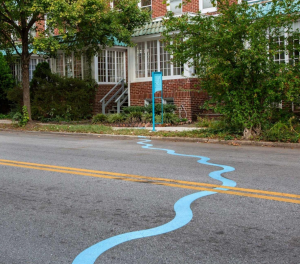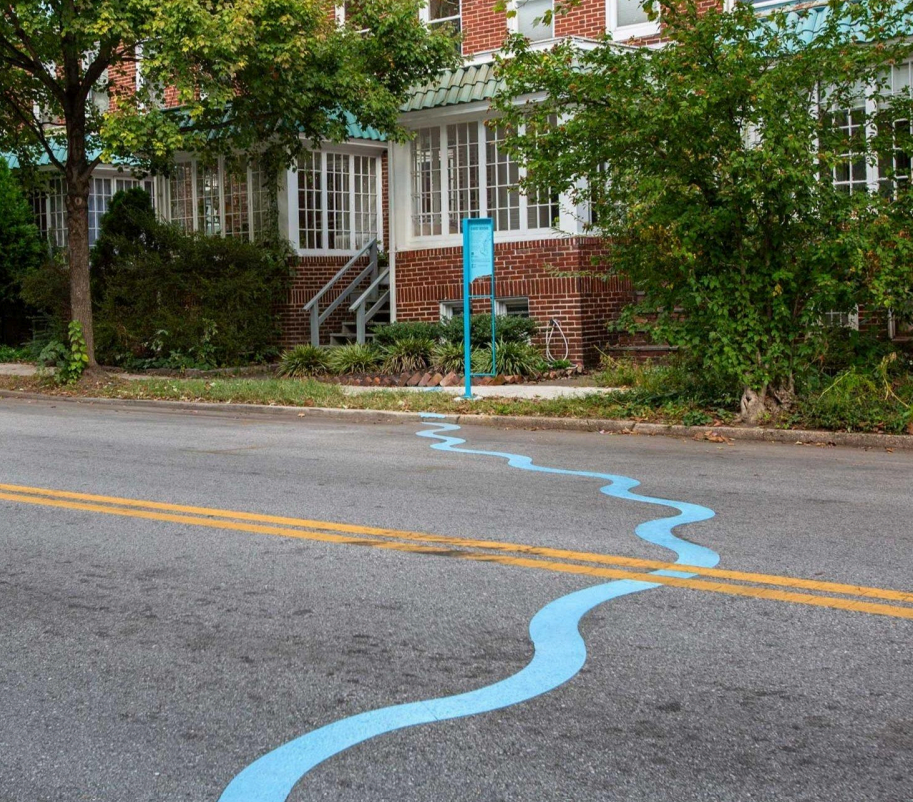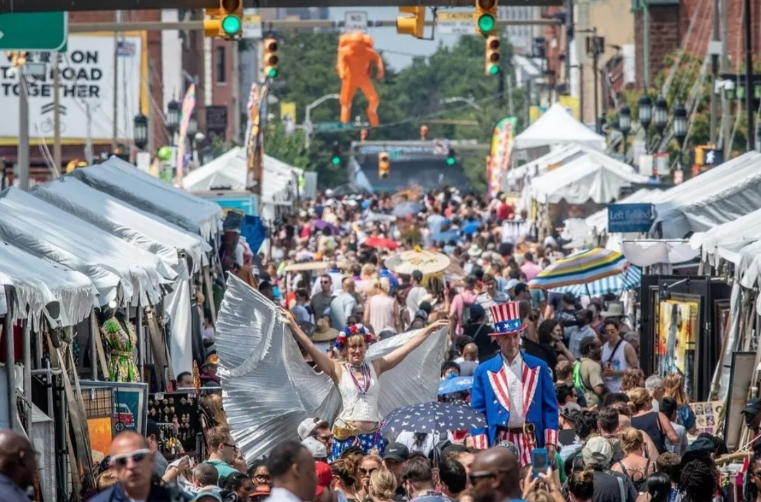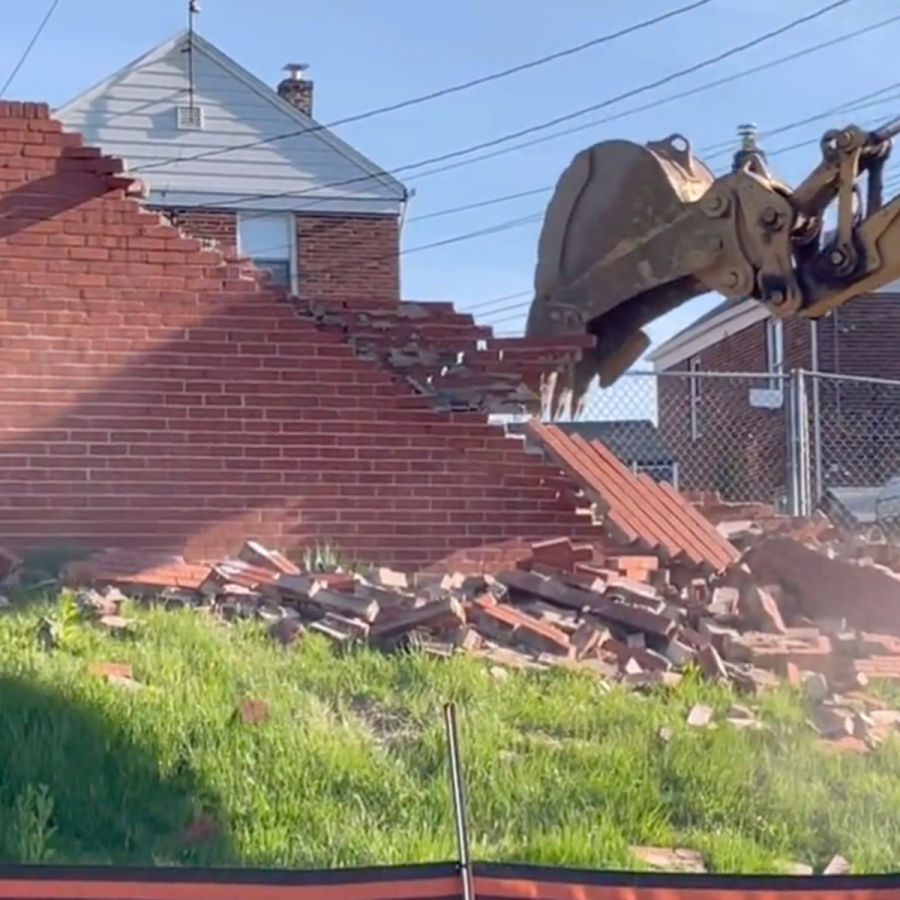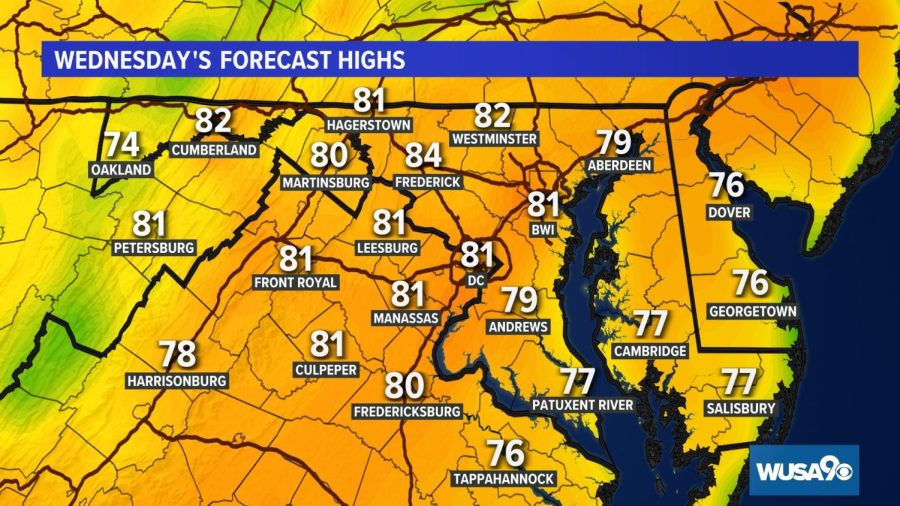Eerie rushes of water can still be heard from storm drains along Baltimore’s Charles Street and 29th streets, racing diagonally across the gridded streets before joining Jones Falls’ louder cacophony. Though long sealed away, the remnants of Sumwalt Run haunt Baltimore’s streets to this day. Previously a small yet hardy staple of Baltimore’s environment and landscape, the river was entombed in the early 1900s and forced to follow a preset path of concrete and brick as the wooded valley that it once carved and gave life to was left without it. Today, the river’s valley has been turned into the still-thriving Wyman Park Dell, yet so much more of the area it spans has been lost.
The river and its surroundings were not at all unappreciated. The Sumwalt Ice Pond and Its consistent tendency to freeze over each Baltimore winter led to a source of recreation in both warmer and cooler months, all while ice companies would harvest from it when frozen over to sell in the following summer. The ice companies and their relationship to Sumwalt Run were indeed a pivotal point in the history of Baltimore, and the downfall of the river. The Ice Famine of 1906, in which remarkably high temperatures for the winter were repeatedly reported, led to disaster amongst ice companies and heavy strain on operations. A solution was present, though Ammonia Refrigeration Systems. By running pressurized liquid ammonia through tubes in a container, it can take in heat from the contents by turning into vapor and later release it to the outside of the container, becoming liquid again, and repeating the cycle. Though less than 50 years old and not native to Baltimore, the technology quickly grew, as did the artificial ice market, and the Sumwalt Ice Pond was made obsolete.
By that point, housing, cultural, and economic development on the part of an influx of immigrants, people like Enoch Pratt, and large exports had led to unprecedented rates of urbanization within the city. The combined need for more housing and infrastructure in the city, and no more pressing need for the river except cultural, finally led the city in 1908 to lay down a new artificial path for the river, with it being fully entombed soon after. Since then, the river has basically been a ghost, out of sight except for those willing to uncover the history of Baltimore and delve into the tunnels that now surround it. Luckily, one such person is Bruce Willen, a Baltimore artist who has, through intense research and interviews, begun to mark the path of the stream upon the asphalt and concrete above it. Having started the project in late 2023 and marked to finish it sometime this year, Willen has used a special type of plastic, the same one used tomark the city’s bike lanes, to trace the former path of the stream across the buildings. At certain points along the path lie markers showing significant points of the river’s history and impact, and how its story can apply today. At its core, the project serves as a reminder as to how urbanization and city growth have buried the natural world, and hope for how that world can again be restored. Any wishes to review the project may be granted at sites 3-11 currently open, as the remaining of the 12 will finish development this year









